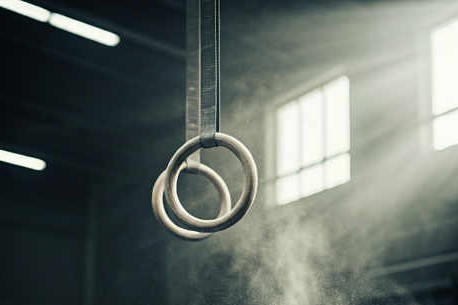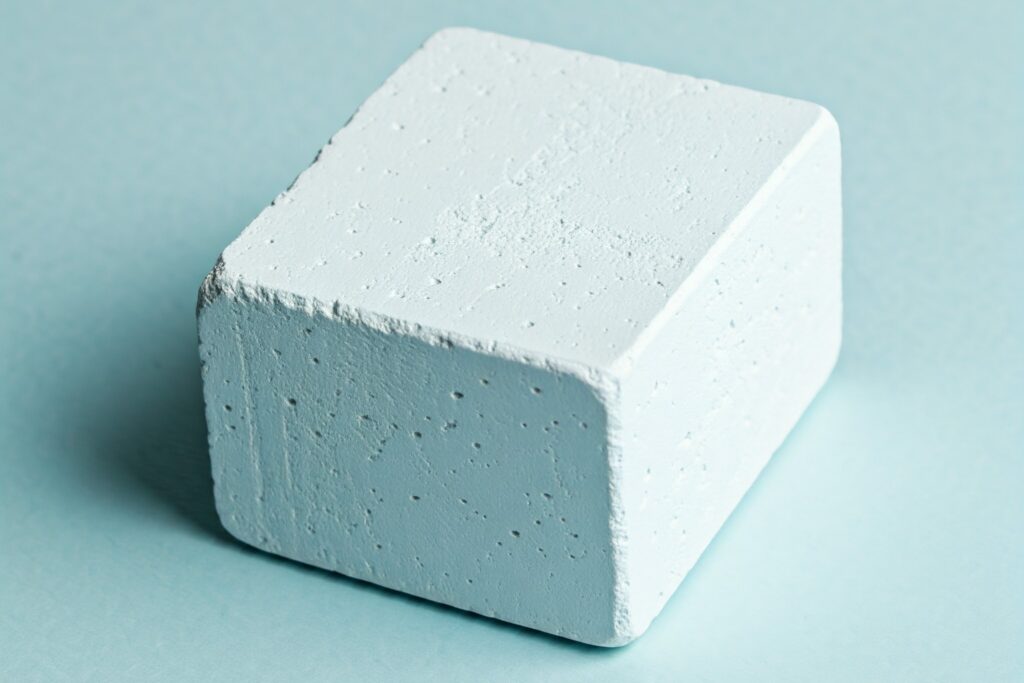Summary
Gymnasts use chalk to absorb moisture from sweat, ensuring a secure hold on equipment during routines. Chalk is applied to hands, feet, legs, and even armpits to prevent slipping and chafing during various events.
Made from magnesium carbonate, gym chalk comes in different textures, with athletes preferring specific brands for their unique feel. Additionally, some gymnasts use a honey-chalk combo on parallel bars for extra grip.
Last but certainly not least…. Don’t Eat Gym Chalk!
Chalk is strongly associated with gymnastics. Pictures of athletes covered with chalk, or with chalk dust floating by their hands come to mind. Chalk is extremely important for gymnasts, but why?
Why do gymnasts use chalk?
In gymnastics, the margin of error between success and failure is quite small. For performance and safety reasons, gymnasts need to make sure that their contact with the equipment is secure as possible. That’s where chalk comes in to play.

Gymnast’s use chalk to aid in their grip on the equipment they are using. Although most commonly used on hanging events, gymnasts use chalk for anything where they need a solid hold.
Gymnasts will even chalk their feet for floor and vault to keep firm contact with the floor on tumbling, or their shins for grip during flipping skills where they grab their legs.
Fellow chalk-lovers such as weightlifters and rock climbers use chalk for the same reasons as gymnasts, needing chalk for a firm grip on a lift or to maintain a hold.
How exactly does chalk improve grip?
Chalk improves grip by absorbing moisture, such as sweat. Sweaty hands or feet are slick, so grip is not as secure. With chalk, the surface of the skin stays dry and maintains enough friction that the gymnast can hold firmly onto the equipment.
There is a balance to how much chalk to use, since too much chalk can reduce friction too much. Similarly, every athlete likes a different amount of chalk on. It is specific to each gymnast.
Uses of Chalk on Different Events and Skills
Why do gymnasts chalk their legs?
Gymnasts chalk their legs to grip when performing somersaults. On tuck or pike flipping skills, gymnasts will need to grab their shins or behind their legs, so having a firm hold to avoid slipping is important for safety. This is most common on floor and vault.
Why do gymnasts chalk their feet?
Gymnasts chalk their feet on floor and vault to run and jump without slipping. This matters most when they punch into acrobatic skills or contact with the springboard. On vault, they also may chalk their hands to prevent slipping while blocking from the vault table.
Why do male gymnasts chalk their armpits?
Male gymnasts chalk their upper arms or armpits for either parallel bars or pommel horse. Chalking armpits on horse and parallel bars prevents chaffing as the arms rub against their sides. Chaffing is more common in athletes with large lat muscles since they have more surface area to generate friction. However, chalking the upper arms inside the biceps protects the arms as they rub against the parallel bars in upper arm support skills, like the front uprise.
What is chalk made of?

Chalk is made of magnesium carbonate. This is not the same as chalk used in a classroom or on a playground, which is calcium carbonate.
For gyms, chalk usually comes in a block form. As a block is used, it turns into powder, which is just as effective as the block.
Although gym chalk is all magnesium carbonate, gymnasts can attest that not all chalk is the same. Different brands of chalks have small differences in texture, and athletes prefer certain feels over others. Some chalk is fluffy and powdery, while other chalk is more gritty. Many gymnasts prefer the gritty feel of certain chalks, as they believe it adds friction to their grip.
Can you eat chalk?
You should not eat chalk.
Although magnesium carbonate is non-toxic, it absorbs moisture and can cause digestive issues when consumed. Likewise, gym chalk is not made with food standards in mind and are not sterile. It’s meant for external use only.
Magnesium carbonate should not be confused with pure magnesium, a mineral the body needs for a variety of vital functions. Research suggests magnesium supplements may be useful for boosting mood, improving sleep, and controlling blood sugar.
How does chalk work?
Magnesium carbonate is not water soluble and hygroscopic. When chalk is exposed to water, chalk traps the water inside its crystalline structure, leaving a dry exposed surface.
Not only absorbing the moisture, but keeping the surface dry. This makes it excellent for grip.
Sticky Stuff: Why do gymnasts use honey on PBars?
While chalk is great, parallel bars is such a grip-intensive event that gymnasts need extra help to avoid slipping. Although not as controversial or scientific as how Major League Baseball pitchers have experimented with different substances to improve pitching, gymnasts have tried different substances to gain a better grip on the bars. The most commonly used substance is honey.
The combination of chalk and honey provides extra tack to the hands while continuing to keep them dry. Also, the honey chalk combo stays on the hands longer than just chalk alone, which is vital for maintaining grip through a long routine.
Where to Buy Gymnastics Chalk?
Various chalks can be found on amazon, but common equipment providers offer bulk shipments.
- Mancino – where 10% of chalk sales are donated to Unite 4 Her.
- US Glove
- Deary’s Gymnastics Supply
- TEN-O By GMR
